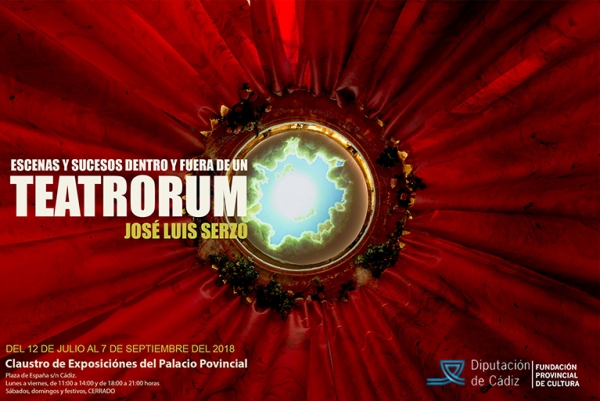From July 12 to September 7, 2018
Exhibition Hall of the Provincial Palace of the Diputación de Cádiz

A constant theatrical drive runs through the work of José Luis Serzo (Albacete, 1977). Dramaturgy, representation, scenic activity, network of artifices and polyphonic structure are key concepts in a work that, more than trying to communicate the expression of a producing subject, seeks to generate aesthetic events capable of stimulating and enabling the spectator’s own eloquence.
This exhibition covers some series from the last seventeen years of the artist’s production, reviewed from a transversal reading that seeks to catalogue his main theatrical resources. The result is a collection of over two hundred works, structured on the basis of micro-universes that correspond to some of his main series: “Post-Show”, “Thewelcome”, “The Most Beautiful Story Ever Told”, “The Lords of the Forest”, “The Dream of the King of the Republic”or “Essays for a Great Work”.
Throughout his career, the artist has acted as a creator of other universes that paraphrase and transcend the structures of reality. In this sense, the mechanism of dramaturgical creation developed by José Luis Serzo handles with special lucidity the constants of disguise and metamorphosis. Both concepts summon up his ownalter ego that, under the name of Blinky Rotred, has starred in several series through a story that expands in time.
This game with the statuses of reality and fiction culminates in the installation Teatrorum, a device with a circular base, closed by a large curtain, where the spectator enters to discover the secret of its interior. In this work (which in this case opens and closes the exhibition, forming part of the series The Dream of the King of the Republic), the artist maintains the epiphaniccharacter – in the sense of revealing an idea – of the old centrally-planned temples. On the other hand, its structure can also be seen as that of an inverted theatre where the curtain, closed on itself, modulates on the outside a stage that is inhabited by a spectator whose role is transformed when it becomes part of the theatrical poetry. In this way, the entire exhibition is configured as a great artifact that seeks simultaneity in the “inside” of the theatrical event and the “outside” of the expectatorial distance.
Carlos Delgado and Noemí Méndez
